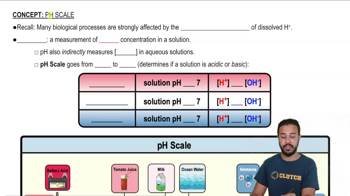Here are the essential concepts you must grasp in order to answer the question correctly.
Sucrose Transport Mechanism
Sucrose transport in plant cells primarily occurs through active transport and facilitated diffusion. Active transport requires energy to move sucrose against its concentration gradient, often coupled with proton gradients established by proton pumps. Understanding this mechanism is crucial for analyzing how different treatments can influence sucrose uptake.
Recommended video:
Concentration Gradient
The concentration gradient refers to the difference in the concentration of a substance across a space. In the context of sucrose transport, a higher extracellular sucrose concentration compared to the cytoplasm would drive sucrose into the cell. Treatments that alter this gradient can significantly impact the rate of sucrose transport.
Recommended video:
Concentration Gradients and Diffusion
pH and Membrane Permeability
pH levels can affect the charge and solubility of molecules, influencing their transport across cell membranes. A decrease in extracellular pH can enhance the proton motive force, potentially increasing sucrose transport. Additionally, altering membrane permeability to ions can facilitate or hinder the transport processes, making it essential to consider these factors in experimental treatments.
Recommended video:






